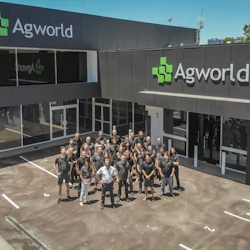When farmers think about precision agriculture most will automatically think about the geospatially based sub-field agronomic management side of ‘precision agriculture’. With increasingly compressed margins due to higher input costs, low commodity prices, and challenging weather conditions, linking sound finance decisions with field management is more of a necessity. Growers will have to start thinking about every acre of their operation: how can I get the most out of this? And how can I decrease costs and increase income?
As the 2018 season comes to an end, growers, agronomists and financial advisors are starting to analyze this year’s results and prepare budgets and plans for next season. Similar to how whole-farm profitability now gets divided into (sub-) field profitability in order to determine the profitability of fields or specific zones within fields, it pays for growers to enlist expert help in analyzing other specific key parts of their operation as well. In the past growers may have been tempted to take many costs simply for granted - divide them on a per acre base and deduct these from their gross profits per acre to calculate a net profit per acre. Today more specific focus is put on the cost-side of a farming operation and how these costs can be kept down.

Got what it takes to join the Agworld team? We’re looking for talented individuals to help us deliver innovative solutions in agriculture.
Some producers cut costs and create tax savings by using pre-payments that are done before December 31st. With little time or extra working capital to spare, it is more important than ever to use state-of the-art field planning tools to determine how much product will they need next year? The key to success lies in the capability of growers to create accurate forecasts and budgets that can then be used to determine which level of pre-pays would be most financially advantageous. “There is literally no room for error in today’s commodity market,” says Alan Grafton, principal with Kcoe Isom’s Ag Knowledge. “In the last year, many farmers have had the opportunity to market profitably, but some did not pull the trigger because they were uncertain about their true cost of production. We know that if we create a plan and a budget with an exact cost of production analysis, growers stand a better chance to market effectively, control costs and weather this downturn in the commodity cycle.”
Where detailed record keeping, budgeting and planning can be laborious, the increasing level of precision needed in all aspects of farming, succeed or fail based on the quality of detailed records. Where in the past an ‘approximate accuracy’ might have been good enough when it comes to farm finances, growers now need to start chasing those extra percentages here; their profitability in challenging times may very well depend on whether they are practicing precision finance. “Farmers will have to use every tool available to them in the next few years,” adds Grafton.





